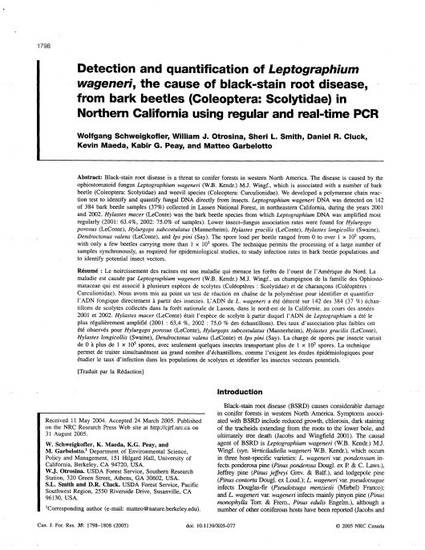
Black-stain root disease is a threat to conifer forests in western North America. The disease is caused by the ophiostomatoid fungus Leptographium wageneri (W.B. Kendr.) M.J. Wingf., which is associated with a number of bark beetle (Coleoptera: Scolytidae) and weevil species (Coleoptera: Curculionidae). We developed a polymerase chain reaction test to identify and quantify fungal DNA directly from insects. Leptographium wageneri DNA was detected on 142 of 384 bark beetle samples (37%) collected in Lassen National Forest, in northeastern California, during the years 2001 and 2002. Hylastes macer (LeConte) was the bark beetle species from which Leptographium DNA was amplified most regularly (2001: 63.4%, 2002: 75.0% of samples) . Lower insect?fungus association rates were found for Hylurgops porosus (LeConte), Hylurgops subcostulatus (Mannerheim), Hylastes gracilis (LeConte), Hylastes longicollis (Swaine), Dendroctonus valens (LeConte), and Ips pini (Say). The spore load per beetle ranged from 0 to over 1 × 105 spores, with only a few beetles carrying more than 1 × 103 spores. The technique permits the processing of a large number of samples synchronously, as required for epidemiological studies, to study infection rates in bark beetle populations and to identify potential insect vectors.
Copyright © NRC Canada. All rights reserved.
Available at: http://works.bepress.com/wolfgang_schweigkofler/32/
